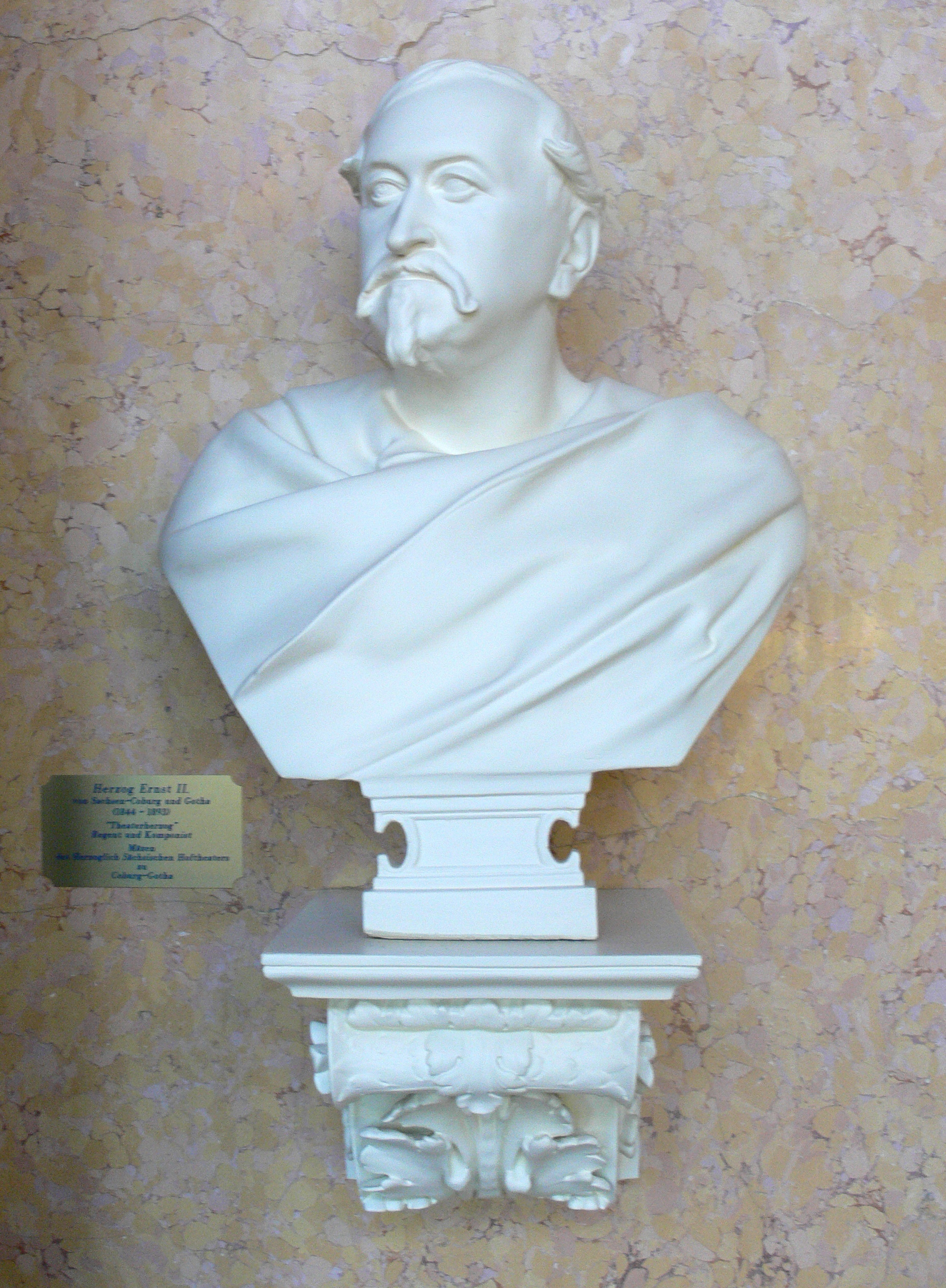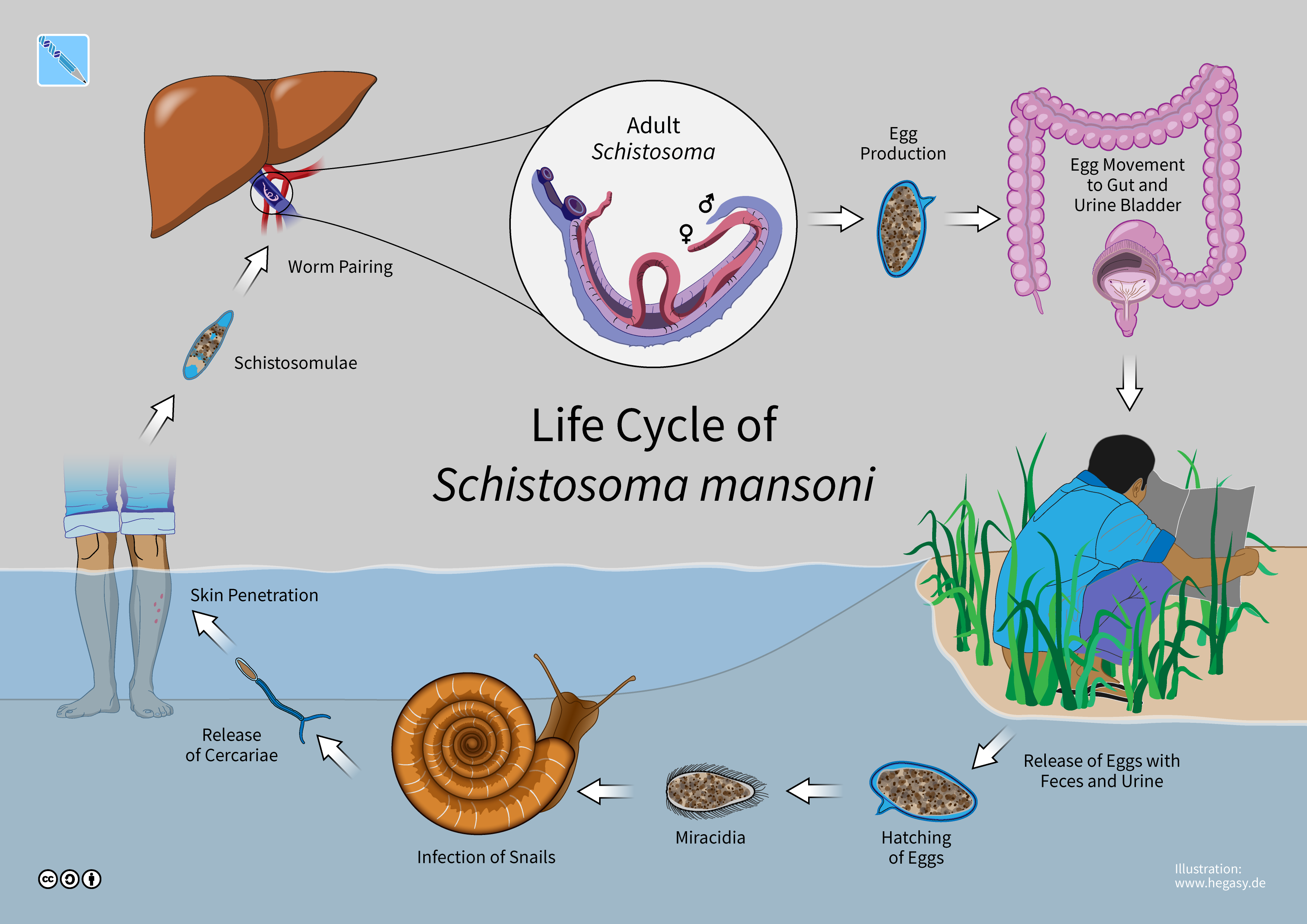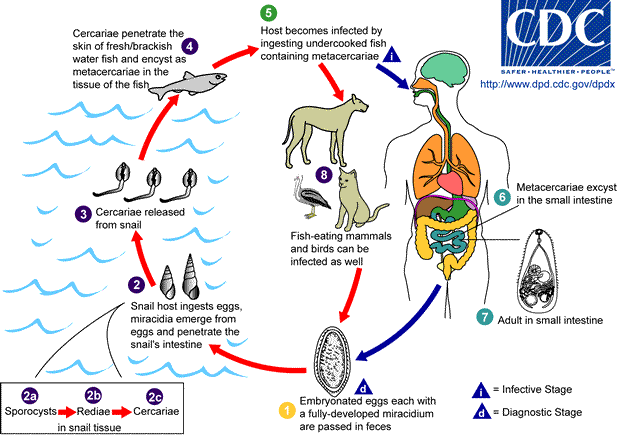|
Theodor Bilharz
Theodor Maximilian Bilharz (23 March 1825 – 9 May 1862) was a German physician who made pioneering discoveries in the field of parasitology. His contributions led to the foundation of tropical medicine. He is best remembered as the discoverer of the blood fluke ''Schistosoma haematobium'', the causative parasite of bloody urine (haematuria) known since ancient times in Egypt. The parasite, as the cause of bladder cancer, is declared by the International Agency for Research on Cancer as Group 1 carcinogen. The infection is known by an eponymous term bilharzia or bilharziasis, as well as by schistosomiasis. Bilharz was born and educated in Sigmaringen, Hohenzollern-Sigmaringen, Germany. After graduating in natural science and philosophy from the Albert-Ludwigs-Universität in 1845, he earned a medical degree from the University of Tübingen in 1849. In 1850, he followed his former teacher Wilhelm Griesinger to Egypt to work at the Qasr El Eyni Hospital in Cairo. He became t ... [...More Info...] [...Related Items...] OR: [Wikipedia] [Google] [Baidu] |
Sigmaringen
Sigmaringen (Swabian German, Swabian: ''Semmerenga'') is a town in southern Germany, in the state of Baden-Württemberg. Situated on the upper Danube, it is the capital of the Sigmaringen (district), Sigmaringen district. Sigmaringen is renowned for its castle, Schloss Sigmaringen, which was the seat of the principality of Hohenzollern-Sigmaringen until 1850 and is still owned by the Hohenzollern family. Geography Sigmaringen lies in the Danube valley, surrounded by wooded hills south of the Swabian Alb and around 40 km north of Lake Constance. The surrounding towns are Winterlingen (in the district of Zollernalb) and Veringenstadt in the north, Bingen, Baden-Württemberg, Bingen, Sigmaringendorf, and Scheer, Germany, Scheer in the east, Mengen, Germany, Mengen, Krauchenwies, Inzigkofen, and Meßkirch in the south, and Leibertingen, Beuron, and Stetten am kalten Markt in the west. The town is made up of the following districts: Sigmaringen town center, Gutenstein (Sigmarin ... [...More Info...] [...Related Items...] OR: [Wikipedia] [Google] [Baidu] |
International Agency For Research On Cancer
The International Agency for Research on Cancer (IARC; french: Centre International de Recherche sur le Cancer, CIRC) is an intergovernmental agency forming part of the World Health Organization of the United Nations. Its role is to conduct and coordinate research into the causes of cancer. It also collects and publishes surveillance data regarding the occurrence of cancer worldwide. Its IARC monographs programme identifies carcinogenic hazards and evaluates environmental causes of cancer in humans. IARC has its own governing council, and in 1965 the first members were the Federal Republic of Germany, France, Italy, the United Kingdom, and the United States of America. Today, IARC's membership has grown to 27 countries. History In late February 1963, after he experienced his spouse suffering and dying of cancer, journalist and peace activist Yves Poggioli sent a letter to Emmanuel d'Astier de la Vignerie relating his story, and urging support for the creation of an intern ... [...More Info...] [...Related Items...] OR: [Wikipedia] [Google] [Baidu] |
United Arab Republic
The United Arab Republic (UAR; ar, الجمهورية العربية المتحدة, al-Jumhūrīyah al-'Arabīyah al-Muttaḥidah) was a sovereign state in the Middle East from 1958 until 1971. It was initially a political union between Egypt (including the occupied Gaza Strip) and Syria from 1958 until Syria seceded from the union after the 1961 Syrian coup d'état. Egypt continued to be known officially as the United Arab Republic until 1971. The republic was led by Egyptian President Gamal Abdel Nasser. The UAR was a member of the United Arab States, a loose confederation with the Mutawakkilite Kingdom of Yemen, which was dissolved in 1961. History Origins The United Arab Republic was established on 1 February 1958 as the first step towards a larger pan-Arab state, originally being proposed to Egyptian President Gamal Abdel Nasser by a group of political and military leaders in Syria. Pan-Arab sentiment traditionally was very strong in Syria, and Nasser was a po ... [...More Info...] [...Related Items...] OR: [Wikipedia] [Google] [Baidu] |
Ernest II, Duke Of Saxe-Coburg And Gotha
Ernest II (german: Ernst August Karl Johann Leopold Alexander Eduard, link=no; 21 June 181822 August 1893) was Duke of Saxe-Coburg and Gotha from 29 January 1844 to his death in 1893. He was born in Coburg to Ernest I, Duke of Saxe-Coburg-Saalfeld, and Princess Louise of Saxe-Gotha-Altenburg. His father became Duke of Saxe-Coburg and Gotha (as Ernest I) in 1826 through an exchange of territories. In 1842, Ernest married Princess Alexandrine of Baden in what was to be a childless marriage. Two years later, he became Duke of Saxe-Coburg and Gotha when his father died. Ernest supported the German Confederation in the Schleswig-Holstein Wars against Denmark, sending thousands of troops and becoming the commander of a German corps; he was instrumental in the 1849 victory at the battle of Eckernförde against Danish forces. After King Otto of Greece was deposed in 1862, the British government put Ernest's name forward as a possible successor. Negotiations concerning this failed for vari ... [...More Info...] [...Related Items...] OR: [Wikipedia] [Google] [Baidu] |
Massawa
Massawa ( ; ti, ምጽዋዕ, məṣṣəwaʿ; gez, ምጽዋ; ar, مصوع; it, Massaua; pt, Maçuá) is a port city in the Northern Red Sea region of Eritrea, located on the Red Sea at the northern end of the Gulf of Zula beside the Dahlak Archipelago.Matt Phillips, Jean-Bernard Carillet, ''Lonely Planet Ethiopia and Eritrea'', (Lonely Planet: 2006), p.340. It has been a historically important port for many centuries. Massawa was the capital of the Italian Colony of Eritrea until the seat of the colonial government was moved to Asmara in 1897. Massawa has an average temperature of nearly , which is one of the highest experienced in the world, and is "one of the hottest marine coastal areas in the world." History Massawa was originally a small seaside village, lying in lands coextensive with the Kingdom of Axum—also known as Kingdom of Zula in antiquity—and overshadowed by the nearby port of Adulis about to the south. Massawa has been ruled or occupied by a successi ... [...More Info...] [...Related Items...] OR: [Wikipedia] [Google] [Baidu] |
Typhus
Typhus, also known as typhus fever, is a group of infectious diseases that include epidemic typhus, scrub typhus, and murine typhus. Common symptoms include fever, headache, and a rash. Typically these begin one to two weeks after exposure. The diseases are caused by specific types of bacterial infection. Epidemic typhus is due to ''Rickettsia prowazekii'' spread by body lice, scrub typhus is due to ''Orientia tsutsugamushi'' spread by chiggers, and murine typhus is due to ''Rickettsia typhi'' spread by fleas. Vaccines have been developed, but none are commercially available. Prevention is achieved by reducing exposure to the organisms that spread the disease. Treatment is with the antibiotic doxycycline. Epidemic typhus generally occurs in outbreaks when poor sanitary conditions and crowding are present. While once common, it is now rare. Scrub typhus occurs in Southeast Asia, Japan, and northern Australia. Murine typhus occurs in tropical and subtropical areas of the worl ... [...More Info...] [...Related Items...] OR: [Wikipedia] [Google] [Baidu] |
Typhoid Fever
Typhoid fever, also known as typhoid, is a disease caused by '' Salmonella'' serotype Typhi bacteria. Symptoms vary from mild to severe, and usually begin six to 30 days after exposure. Often there is a gradual onset of a high fever over several days. This is commonly accompanied by weakness, abdominal pain, constipation, headaches, and mild vomiting. Some people develop a skin rash with rose colored spots. In severe cases, people may experience confusion. Without treatment, symptoms may last weeks or months. Diarrhea may be severe, but is uncommon. Other people may carry the bacterium without being affected, but they are still able to spread the disease. Typhoid fever is a type of enteric fever, along with paratyphoid fever. ''S. enterica'' Typhi is believed to infect and replicate only within humans. Typhoid is caused by the bacterium ''Salmonella enterica'' subsp. ''enterica'' serovar Typhi growing in the intestines, peyers patches, mesenteric lymph nodes, spleen, liver ... [...More Info...] [...Related Items...] OR: [Wikipedia] [Google] [Baidu] |
University Of Cairo
Cairo University ( ar, جامعة القاهرة, Jāmi‘a al-Qāhira), also known as the Egyptian University from 1908 to 1940, and King Fuad I University and Fu'ād al-Awwal University from 1940 to 1952, is Egypt's premier public university. Its main campus is in Giza, immediately across the Nile from Cairo. It was founded on 21 December 1908;"Brief history and development of Cairo University." Cairo University Faculty of Engineering. http://www.eng.cu.edu.eg/CUFE/History/CairoUniversityShortNote/tabid/81/language/en-US/Default.aspx however, after being housed in various parts of Cairo, its faculties, beginning with the Faculty of Arts, were established on its current main campus in Giza in October 1929. It is the second oldest institution of higher education in Egypt after Al Azhar University, notwithstanding the pre-existing higher professional schools that later became constituent colleges of the university. It was founded and funded as the Egyptian University by a commi ... [...More Info...] [...Related Items...] OR: [Wikipedia] [Google] [Baidu] |
Schistosoma Mansoni
A paired couple of ''Schistosoma mansoni''. ''Schistosoma mansoni'' is a water-borne parasite of humans, and belongs to the group of blood flukes (''Schistosoma''). The adult lives in the blood vessels ( mesenteric veins) near the human intestine. It causes intestinal schistosomiasis (similar to '' S. japonicum'', '' S. mekongi'', ''S. guineensis'', and '' S. intercalatum''). Clinical symptoms are caused by the eggs. As the leading cause of schistosomiasis in the world, it is the most prevalent parasite in humans. It is classified as a neglected tropical disease. As of 2021, the World Health Organization reports that 236.6 million people have schistosomiasis and most of it is due to ''S. mansoni''. It is found in Africa, the Middle East, the Caribbean, Brazil, Venezuela and Suriname. Unlike other flukes (trematodes) in which sexes are not separate ( monoecious), schistosomes are unique in that adults are divided into males and females, thus, gonochoric. However, a permanent ... [...More Info...] [...Related Items...] OR: [Wikipedia] [Google] [Baidu] |
Heterophyes Heterophyes
''Heterophyes heterophyes'' was discovered by Theodor Maximaillian Bilharz in 1851. This parasite was found during an autopsy of an Egyptian mummy. ''H. heterophyes'' is found in the Middle East, West Europe and Africa. They use different species to complete their complex lifestyle. Humans and other mammals are the definitive host, first intermediate host are snails, and second intermediate are fish. Mammals that come in contact with the parasite are dogs, humans, and cats. Snails that are affected by this parasite are the '' Cerithideopsilla conica''. Fish that come in contact with this parasite are ''Mugil cephalus, Tilapia milotica, Aphanius fasciatus,'' and '' Acanthgobius'' sp. Humans and mammals will come in contact with this parasite by the consumption of contaminated or raw fish. This parasite is one of the smallest endoparasite to infect humans. It can cause intestinal infection called heterophyiasis. Distribution This species occurs in Egypt, Sudan, Israel, Brazil, Spai ... [...More Info...] [...Related Items...] OR: [Wikipedia] [Google] [Baidu] |
Hymenolepis Nana
Dwarf tapeworm (''Hymenolepis nana'', also known as ''Rodentolepis nana'', ''Vampirolepis nana'', ''Hymenolepis fraterna'', and ''Taenia nana'') is a cosmopolitan species though most common in temperate zones, and is one of the most common cestodes (a type of intestinal worm or helminth) infecting humans, especially children. Morphology As its name implies ( grc, νᾶνος, nānos – dwarf), it is a small species, seldom exceeding 40 mm long and 1 mm wide. The scolex bears a retractable rostellum armed with a single circle of 20 to 30 hooks. The scolex also has four suckers, or a tetrad. The neck is long and slender, and the segments are wider than long. Genital pores are unilateral, and each mature segment contains three testes. After apolysis, gravid segments disintegrate, releasing eggs, which measure 30 to 47 µm in diameter. The oncosphere is covered with a thin, hyaline, outer membrane and an inner, thick membrane with polar thickenings that bear sever ... [...More Info...] [...Related Items...] OR: [Wikipedia] [Google] [Baidu] |
Wilhelm Griesinger
Wilhelm Griesinger (29 July 1817 – 26 October 1868) was a German neurologist and psychiatrist born in Stuttgart. Life and career He studied under Johann Lukas Schönlein at the University of Zurich and physiologist François Magendie in Paris. After receiving his doctorate, he worked in several locations, including Winnethal in Württemberg, in Stuttgart (private practice), in the medical clinic at Tübingen, and at the University of Kiel. In 1845 Griesinger published his influential textbook ''Die Pathologie und Therapie der psychischen Krankheiten''. In the early 1850s he traveled to Egypt as director of the medical school in Cairo, and in the meantime became a personal physician to Abbas I. During his stay in Egypt, he gained experience in regards to tropical diseases, and as a result published ''Klinische und anatomische Beobachtungen über die Krankheiten von Aegypten'' (1854) and ''Infectionskrankheiten'' (1857). In 1854 he returned to the University of Tübingen ... [...More Info...] [...Related Items...] OR: [Wikipedia] [Google] [Baidu] |


.jpg)




